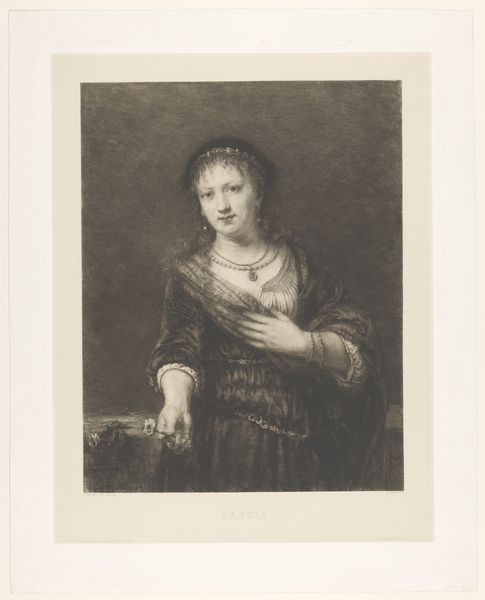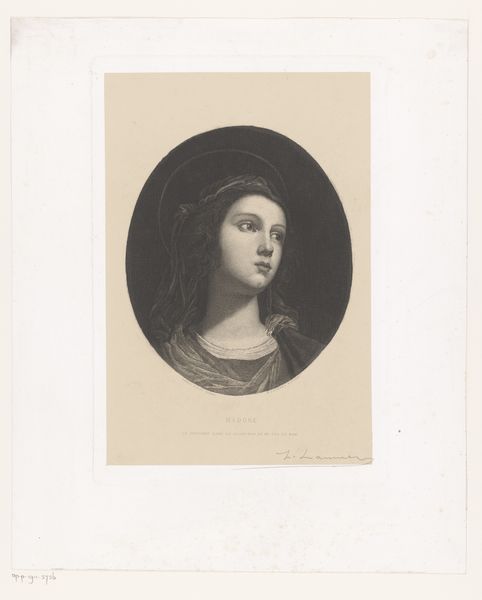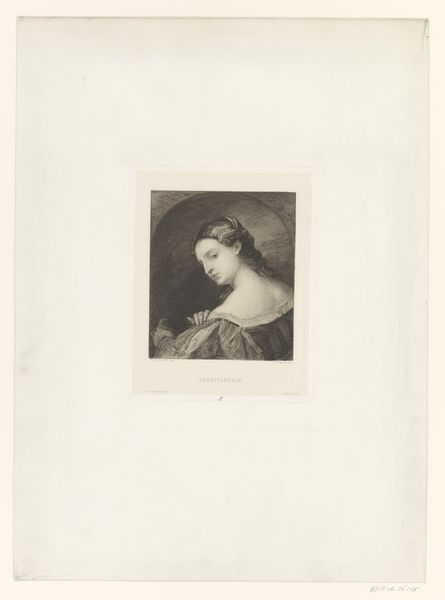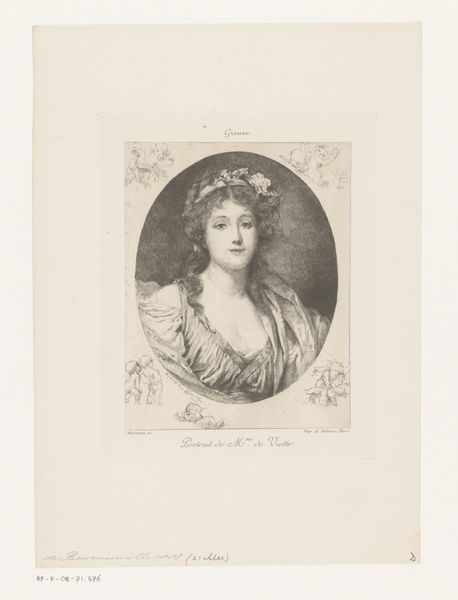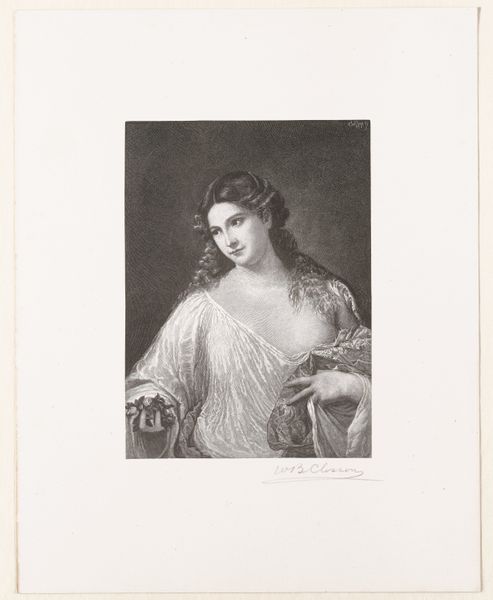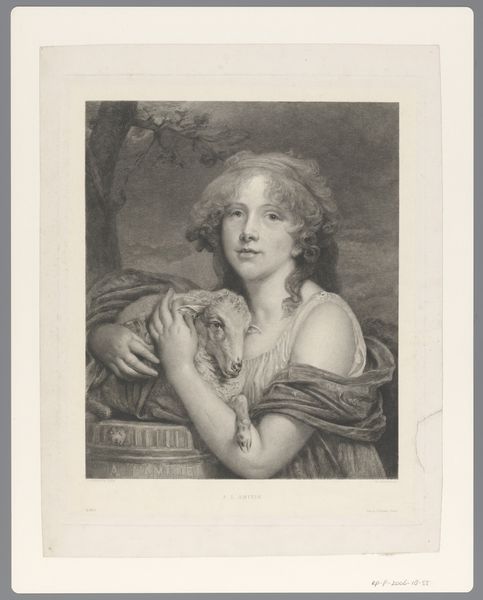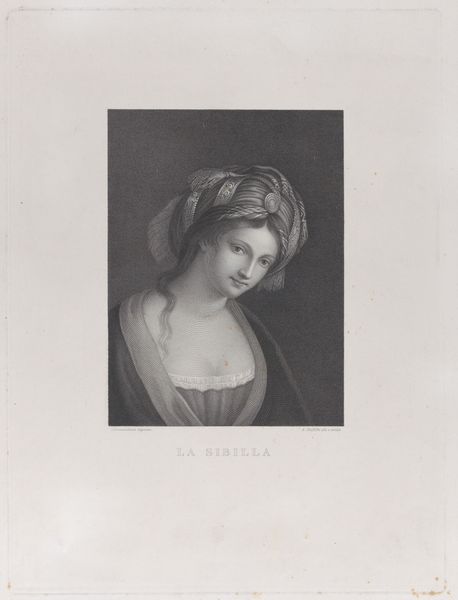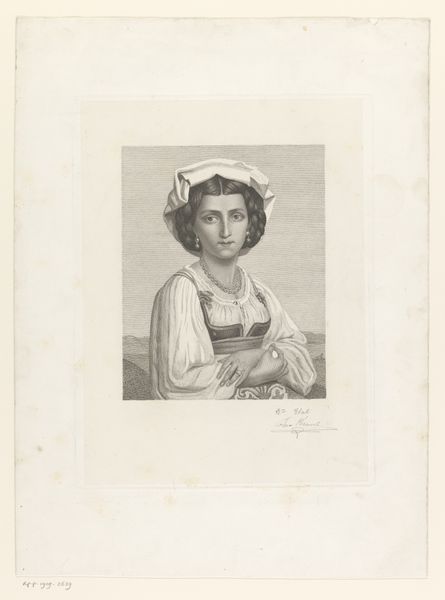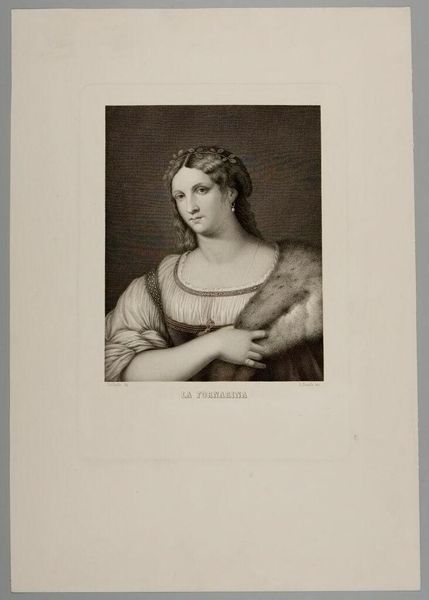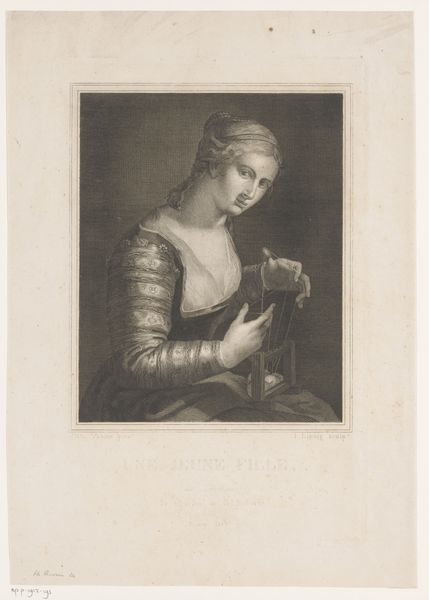
Dimensions: height 595 mm, width 440 mm
Copyright: Rijks Museum: Open Domain
Curator: Here we have an exquisite print, dating sometime between 1833 and 1909. It's titled "Portret van een onbekende vrouw," or Portrait of an Unknown Woman, created by Albrecht Schultheiss. The artwork is an exemplar of Neoclassical style in a portrait and draws deeply on the traditions of academic art. Editor: She looks… reserved, yet incredibly self-possessed. There’s a quiet strength emanating from her eyes. I am curious about her possible identity. Curator: Well, consider the historical context: The rise of the middle class and the influence of classical ideals deeply affected the art world of the time. A print like this would have allowed wider access to portraiture, democratizing art to some extent, and influencing ideas of how female individuals should be perceived. It represents the aesthetics of the era and demonstrates the social impact of making such imagery broadly accessible. Editor: Exactly! What kind of woman could afford to sit for such a portrait, to partake in the display of herself in Neoclassical aesthetics, and how might the lack of knowing her specific identity inform assumptions based on race, gender and other social positionings of the era? The piece demands such discussions and inquiries into how representation affects reality and identity. I suppose even the “unknown” status carries some significance. Curator: The “unknown” is intriguing. Her social status appears somewhat elevated, judging from her garments and jewelry; note the fur stole and that lovely ring on her finger. This touches on issues related to class and status portrayal within portraiture as a genre. Did Schultheiss purposely obscure her identity or were these signifiers merely typical of upper-middle-class portraiture in that moment in European culture? Editor: Absolutely! To consider Albrecht Schultheiss and their production in those complex social conditions of gender inequality allows for the print to ask questions, open debates and potentially call to action today. Thank you for the enlightenment about it, it opens multiple paths. Curator: Indeed. It is an artifact, representative of a bygone era. An age that held specific tastes, class dynamics and perhaps restricted some in representing their own individuality. Editor: Thanks, I think visitors will feel encouraged to connect this to contemporary discourse on visibility, anonymity, and portraiture in social justice causes and gender.
Comments
No comments
Be the first to comment and join the conversation on the ultimate creative platform.
